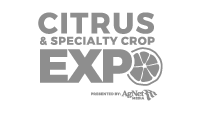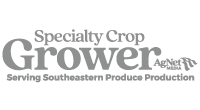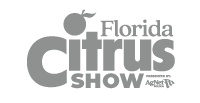
Scientists with the University of Florida Institute of Food and Agricultural Sciences (UF/IFAS) and the U.S. Department of Agriculture Agricultural Research Service (USDA/ARS) recently wrote about efforts to identify HLB-affected versus healthy citrus fruit. UF/IFAS scientists are Mark Ritenour, Ketan Shende and Thomas Burks. Michelle Heck is with the USDA/ARS.
A slightly edited version of their article follows:
Most citrus trees in Florida are infected with HLB (greening) and produce both healthy and greening fruit. Greening fruit express visible symptoms of HLB infection. Healthy fruit, though HLB-infected, do not show noticeable HLB symptoms. Consumers can taste the inferior quality of greening fruit. Healthy fruit tastes similar to fruit from non-HLB-infected trees.
In addition to knowing which HLB treatments increase fruit yield, it is important to know which treatments increase the percentage of healthy fruit from HLB-infected trees.
Harvested fruit from the Indian River Research and Education Center (IRREC) Millennium Block trial of different grapefruit-pummelo hybrids were manually separated into healthy and greening categories. The percentage of healthy fruit ranged widely depending on variety, from 17% to 76%. To further this effort, the Citrus Research and Development Foundation (CRDF) provided funds to purchase a vision system with two visible-spectrum cameras, an infrared camera and a near-infrared camera.
This system has been in service at IRREC since 2020, collecting data on individual fruit weight, dimensions, density and size distribution. The long-term plan is to train the system to identify and separate greening and healthy fruit.
In 2024, funding was received from the U.S. Department of Agriculture Grove-First project to hire a postdoctoral research associate to spearhead research to develop the greening versus healthy fruit separation capability. Funds were also included to upgrade the vision system to the latest cameras and technology, including artificial intelligence programming. This upgrade is anticipated to be completed before the 2025–26 season.
Work is underway detailing key fruit characteristics that might be used to distinguish greening and healthy fruit. The current system has been trained to identify both the stem and blossom ends of the fruit. The angle between them (stem angle) is being evaluated as one of many distinguishing features of greening fruit.
Ray Ruby grapefruit from both citrus under protective screen and open field locations were sampled and initially processed through the vision system to measure stem angle. The fruit were then cut lengthwise, and the stem angle measured manually, along with internal Brix and titratable acidity. Advanced deep learning methods using state-of-the-art open-source models will be used to detect features indicative of HLB conditions. This will enable differentiation between affected and unaffected fruits.
Eventually, the researchers hope to train the system to classify each fruit with other characteristics, such as off-bloom fruit and those with granulation. This will generate a complete distribution understanding of fruit-quality characteristics from any lot of fruit.
Source: Indian River Citrus League
Share this Post
Sponsored Content










